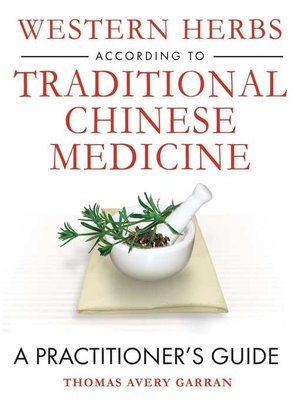Western Herbs according to Traditional Chinese Medicine
ebook ∣ A Practitioner's Guide
By Thomas Avery Garran

Sign up to save your library
With an OverDrive account, you can save your favorite libraries for at-a-glance information about availability. Find out more about OverDrive accounts.
Find this title in Libby, the library reading app by OverDrive.



Search for a digital library with this title
Title found at these libraries:
| Library Name | Distance |
|---|---|
| Loading... |
The first book to exclusively use Chinese medical theories and terminology to guide practitioners of Chinese medicine in the use of Western herbs
• Written entirely according to the theory, diagnosis, and treatment paradigm of traditional Chinese medicine (TCM)
• Explains how to combine and modify the standard TCM formulas to non-Chinese herbs suitable for Western practitioners
• Includes 58 monographs of common Western healing herbs, detailing how each plant is used clinically
The ever-growing number of Chinese medicine practitioners in the West has brought about an amalgamation of many styles of Chinese medicine and various other forms of medicine from around the world. This book addresses the increasing demand for knowledge of how to integrate plants from outside the standard Chinese materia medica into the fold of Chinese medical practices in the West. It is the first in-depth guide to using Western herbs exclusively according to the theories, diagnoses, and treatments of traditional Chinese medicine that harmonizes the unique terminology and theories of TCM with other botanical medicines.
The book contains 58 monographs, illustrated with full-color photographs, of herbs commonly used by Western herbalists. Each herb is grouped by the basic categorization for medicinals in Chinese medicine, such as Herbs that Resolve the Exterior and Herbs that Regulate Blood. The monographs detail the energetics, function and indication, channels entered, dosage and preparation, and contraindications of each plant. The author also explains how to use the herbs to modify standard formulas used in everyday Chinese herbal medicine, based on his own clinical experience. An appendix of Western Analogs for Chinese Herbs further highlights 40 Chinese medicinals that have related species growing in the West.
• Written entirely according to the theory, diagnosis, and treatment paradigm of traditional Chinese medicine (TCM)
• Explains how to combine and modify the standard TCM formulas to non-Chinese herbs suitable for Western practitioners
• Includes 58 monographs of common Western healing herbs, detailing how each plant is used clinically
The ever-growing number of Chinese medicine practitioners in the West has brought about an amalgamation of many styles of Chinese medicine and various other forms of medicine from around the world. This book addresses the increasing demand for knowledge of how to integrate plants from outside the standard Chinese materia medica into the fold of Chinese medical practices in the West. It is the first in-depth guide to using Western herbs exclusively according to the theories, diagnoses, and treatments of traditional Chinese medicine that harmonizes the unique terminology and theories of TCM with other botanical medicines.
The book contains 58 monographs, illustrated with full-color photographs, of herbs commonly used by Western herbalists. Each herb is grouped by the basic categorization for medicinals in Chinese medicine, such as Herbs that Resolve the Exterior and Herbs that Regulate Blood. The monographs detail the energetics, function and indication, channels entered, dosage and preparation, and contraindications of each plant. The author also explains how to use the herbs to modify standard formulas used in everyday Chinese herbal medicine, based on his own clinical experience. An appendix of Western Analogs for Chinese Herbs further highlights 40 Chinese medicinals that have related species growing in the West.







